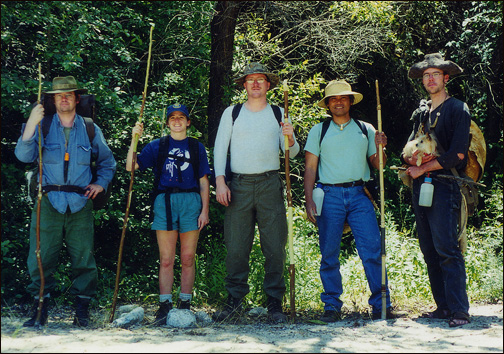
The fear of the unknown can be a very scary experience. It can make a strong man panic, a brave woman act irresponsibly without thinking and a mature teenager cry. But to feel fear is normal and necessary. It is nature's way of giving us that extra charge of energy. Our adrenal glands release a mixture of chemicals commonly known as adrenaline. The release of adrenaline draws blood into the major muscle groups in anticipation of the "flight or fight" reaction. We can use that extra shot of energy to get us out of harm's way, if we have the willpower to control our actions. Everyone feels adrenaline. The only difference is the way we react to it. We control it or it controls us. Fear and excitement often share the same symptoms because they are one and the same. The only difference is our perception of the event. If we perceive a pleasant outcome, we feel excited. If we perceive an unpleasant one. we feel apprehension. This is why two people doing exactly the same thing can have completely opposite reactions to a situation. Imagine two people about to go backpacking for the first time. One may be excited about the adventure and the other scared of the wilderness.
The wilderness can be frightening if we got lost, our supplies run low or our gear disappears. How do we find food and water, how do we make fire, how do we find our way back and how do we stay warm at night? What about those wild animals out there and the weird sounds at night? It's the fear of the unknown that can creep into our mind before the adventure begins.
Knowledge and experience are the first step to overcoming fear. Self-assurance can be established by the knowledge of survival skills and understanding your relationship with the plants, the animals, the water, the land and the weather around you. Practice and experience will give you the basis to test your skills to have more confidence in handling difficult situations. You can overcome obstacles that you may face with knowledge, practice, common sense and the will to survive.
Twenty five years ago, I proposed to a group of friends a backpacking opportunity to hike into the wilderness with minimal backpacking gear. No sleeping bags, tents, matches or food were allowed on the trip. We would gather and forage as we traveled. A lot of friends backed down from the trip when food could not be taken. The fear of not filling their belly was too frightening, much less, the idea of no sleeping bag or matches. Our reaction to any situation depends not on the situation itself, but purely on our individual perception of it. So, in order to get a group together, certain amenities were allowed. A metal cup or container could be taken for boiling water. A wool blanket (or hides and fur), plastic trash bags, a water container, a knife and/or a plastic tarp could be packed. You could bring everything mentioned or just bring a few items. The idea was to travel as light as possible.
The final group for the wilderness adventure consisted of 4 men, including myself, and 1 woman. Everyone already had backpacking or camping experiences. Two of the guys were hunters and the other fellow had just acquired his hunting license. Three of the people in the group had fishing licenses. The fear of being in the wilderness was foreign to everyone in the group. The adrenaline rush was from experiencing wilderness survival skills.

I wanted a location that was not familiar to everyone and the area had to have a source of water. The adventure was not to simulate a survival situation, but to gain confidence in being in the wilderness without bringing any food and carrying a lot of modern backpacking gear. Can you get by with the knowledge of wilderness survival skills?
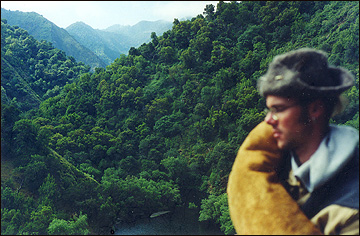
The area selected was a wooded canyon with a stream flowing through it. There was adequate water to provide for our needs.
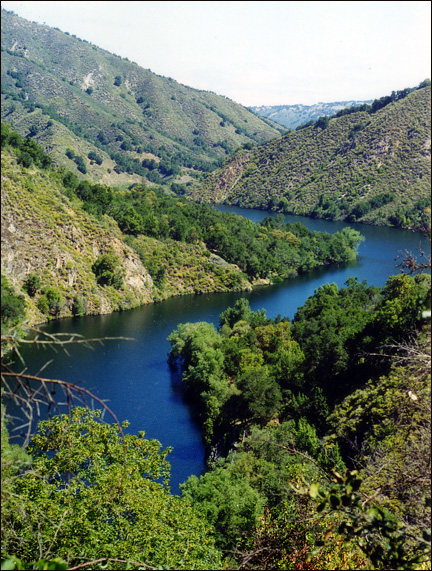
WATER
Your body is 75% water by weight. This water is needed for circulation and other bodily processes including respiration and converting food to energy. Your body loses water through sweating, urinating. defecating and breathing. The fluid your body loses must be replaced for you to function properly. So, one of your first objectives is to obtain an adequate supply of water in a survival situation. You can't live long without it, especially in hot areas where you lose so much through sweating. Even in cold areas, you need a sufficient amount of water a day to maintain efficiency. People can survive without food for weeks or even a month, but go without water for even just one day and it will decrease your ability in doing even the simplest task. A lack of water causes dehydration, which may result in lethargy, headaches, dizziness and confusion. Insufficient water will also increase your susceptibility to severe shock if you get injured. You will easily be vulneralbe to the effects of cold or heat. Morale will drop and a host of other problems ensue.
Thirst is no indication of how much water you need. Even when you are not thirsty, drink small amounts of water regularly to prevent dehydration. Dark yellow or brown urine is a diagnostic indicator of dehydration. If you are exerting a lot of energy or are under severe conditions, increase your water intake. You should be drinking 2 to 3 quarts of water daily.
If water rations are insufficient, then movement should be reduced to the cool times of the day or night. Stay in the shade as much as possible. This will reduce the water lost by excessive sweating. Move slowly to conserve energy. In very hot areas, it is better to take smaller quantities of water more frequently. To maximize your water intake, drink slowly and in sips. Don't eat anything if you don't have water to drink with it. By consuming food you'll burn up your body's supply of the vital fluid all the quicker. Do not remove your clothing, even in the sun. Loose layers of clothing help to control sweating by keeping the humidity near the skin to maximize the cooling effect.
The best place to keep water is in your stomach. When you get to a water source, start treating your water. Keep hydrated and drink as much water as needed. Fill your water containers and drink your fill of water before departing.
Basic filtering is the first step in removing particulate matter in the water. Three sticks can be lashed together near the end of the sticks to form a tripod. Tie a piece of cloth or your T-shirt under the lashed area of the sticks. If you have four corners on your cloth, bind two of the corners together. You will now have three corners. Tie each corner to one of the three sticks. The cloth should not slide downwards on the stick. Use cordage if necessary to secure the cloth to the sticks. Water from a stream, pond or any water source is poured into the cloth to filter out any debris or mud in the water. Additional pieces of cloth can be tied under the first cloth to create a multi-layered filter. A container is placed under the last cloth layer to catch the dripping water.
A plastic water or soda bottle can be made into another filter system. Cut off the upper top portion of the plastic bottle. Perforate the bottom of the plastic bottle with small holes. Place a layer of grass in the bottom, followed by a layer of sand, layered with many pieces of very small charcoal, another layer of sand and a final layer of grass on top. The five separate layers should fill up your plastic bottle. Water is poured into the plastic bottle filter and allowed to drain out of the small holes at the bottom of the plastic bottle into a water container. Take the water from the container and filter the water as many times through the plastic bottle until it comes out relatively clear.
Filtering water doesn't purify it, but it reduce particles, sediment and makes the water taste better.
Consider water from any source as contaminated with pathogens, like Giardia lamblia or Escherichia coli, that can cause an upset stomach, dysentery or even worst. The danger from these disease causing organisms is fluid loss due to diarrhea and vomiting. To be on the safe side, boil your water or use purification tablets before drinking.
Two methods for boiling water:
1.
If you have an Army canteen metal cup or a soup can, you can use it to boil water and cook your food over a fire. The metal container is light and has more than one use.
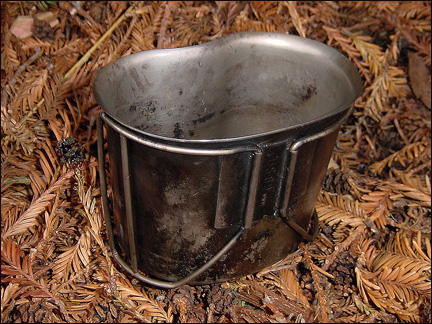
2. In a wilderness situation, hot rocks can be used to boil water in a container. A plastic tarp can line a deep depression in the ground to provide a container for boiling water with heated rocks. Place some unheated stones in the bottom of the plastic container to keep the hot rock from touching the plastic surface. The water will quickly heat up as the hot rock transfers its heat to the water. When the hot stone begins to cool off, take it out with green sticks and replace the stone with another hot rock. Continue the process until the water is at a rolling boil.
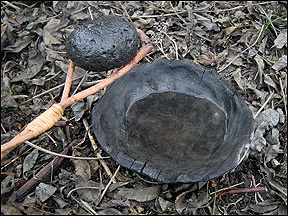
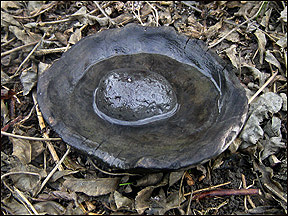
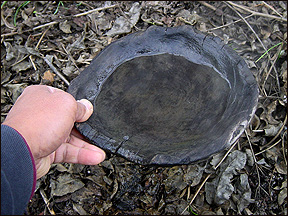
You can also create a wooden bowl with a knife and coals for a container. Peck out a sandstone cup with a small, harder rock. Heated pebbles can be placed in the rock cup to boil water. Hollowing out a wooden bowl or sandstone cup takes a lot of your energy and time to make the container. Take this into consideration and your immediate situation when thinking of ways to boil your water.
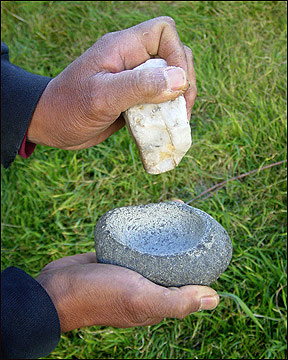
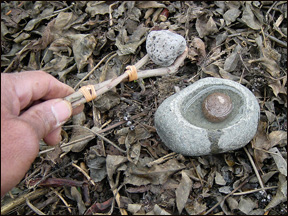
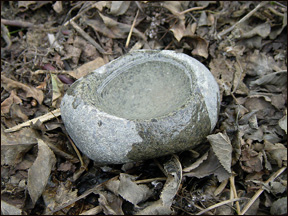
Another method of boiling water on PrimitiveWays.com:
Boiling water in a cabbage leaf -
http://www.primitiveways.com/boiling%20water%20in%20cabbage%20leaf.html
Water temperatures above 160° F (70° C) will kill all pathogens within 30 minutes and above 185° F (85° C) within a few minutes. So, in the time it takes for the water to reach the boiling point (212° F or 100° C) from 160° F (70° C), all pathogens will be killed. Let the water boil rapidly for one minute at higher altitudes, since water boils at a lower temperature. At sea level, the boiling point of water is 212° F. For every 500 feet increase in elevation, the boiling point drops one degree. For example, if your campsite is 5,000 feet above sea level, then water boils at 202° F. The only reason you typically get water up to the boiling point is you probably do not have a thermometer handy to measure the water temperature. When the water is boiling, you know it is hot enough and the disease causing organisms in your water were killed quite some time earlier. When the water has reached a full rolling boil, you do not have to boil it any further. Water temperature cannot get any higher than its boiling point no matter how much heat is applied. You will gain nothing by boiling the water longer. You'll be wasting fuel and evaporate more water. After you remove the water from the heat source, it will take another period of time for the water to cool down enough for you to be able to drink it, during which it continues to remain hot enough to eliminate pathogens.
Boiling only kills living contaminants like parasites, bacteria and viruses. Chemical contaminants (e.g. heavy metals, toxins produced by rotting material, sewage, etc.) will not be affected. If possible, it's better to spend a little bit of time finding a clean water source (running water) than trying to purify a dirty one (stagnant water).
Three techniques for obtaining water (if a creek, river, lake or any major water source is not available):
1. A solar still can be constructed with a plastic tarp. This is a system to extract water from the soil. A hole is dug where there might be moisture in the soil. A water collecting container is placed in the middle of the pit. The plastic tarp covers the hole and is lined with heavy rocks to seal the perimeter of the pit. A small stone is placed in the center of the tarp over the container in the hole to create a funnel. Create an angle of about 45-degrees from the edge of the hole to the center on the tarp. Water condenses into droplets on the underside of the tarp and gradually drips into the container. Crushed herbaceous plants can also be placed in the pit to increase the still's output. Be careful to use only edible plants as many poisons will evaporate from toxic plants and drip down into your water container. You can also pour impure or filtered water into the solar still pit and allow it to evaporate and condense into your container.
2.
A branch with foliage or a small shrub enclosed in a plastic bag can be used to obtain water. Plants loose water vapor into the atmosphere through a process called transpiration. The water vapor will condense on the inner surface of the bag and slowly flow towards the lowest part of the bag. Angle the bottom of the bag to capture the water droplets. This installation should work for a few days as long as the plant is not too exposed to the sun. Avoid killing the plant from overheating in the bag. Never use plants that may be poisonous. It takes a long time to collect liquid from a plant. This method is best used to stay the pains of thirst or to obtain temporary, "quick relief" emergency water.
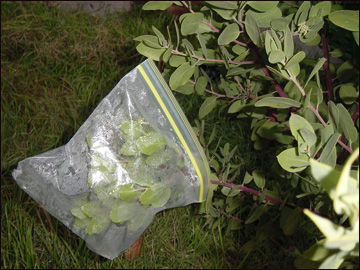
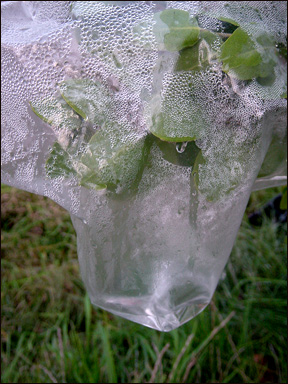
3. Water can be collected from early morning dew. Also, a depression in a rock or the nook of a tree or a stump may contain water. Soak up the water from the catch with a piece of cloth or some dried grasses, wring it into a container, then filter and boil the fluid.
An oven bag (turkey size) purchased from the grocery store makes an ideal plastic bag for boiling water with hot rocks, for enclosing plants using the transpiration/condensation method and making a small solar still. The oven bags are made to withstand heat (not to exceed 400° Fahrenheit). Store an oven bag in your emergency kit.
E-mail your comments to "Dino Labiste" at KahikoArts@yahoo.com
We hope the information on the PrimitiveWays website is both instructional and enjoyable. Understand that no warranty or guarantee is included. We expect adults to act responsibly and children to be supervised by a responsible adult. If you use the information on this site to create your own projects or if you try techniques described on PrimitiveWays, behave in accordance with applicable laws, and think about the sustainability of natural resources. Using tools or techniques described on PrimitiveWays can be dangerous with exposure to heavy, sharp or pointed objects, fire, stone tools and hazards present in outdoor settings. Without proper care and caution, or if done incorrectly, there is a risk of property damage, personal injury or even death. So, be advised: Anyone using any information provided on the PrimitiveWays website assumes responsibility for using proper care and caution to protect property, the life, health and safety of himself or herself and all others. He or she expressly assumes all risk of harm or damage to all persons or property proximately caused by the use of this information.
© PrimitiveWays 2016